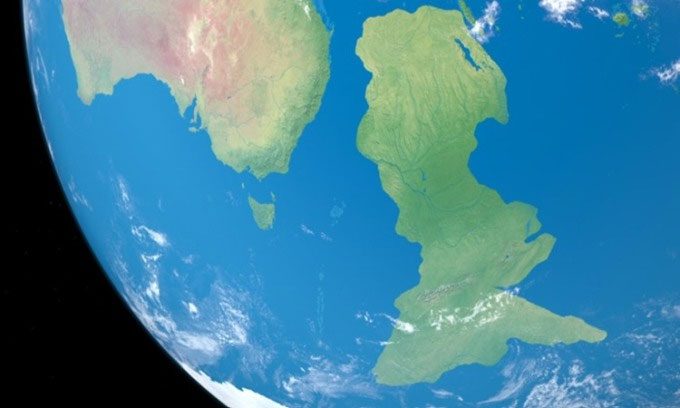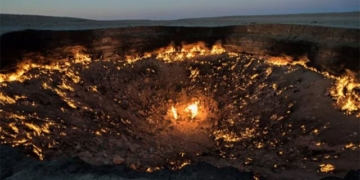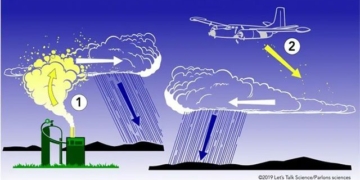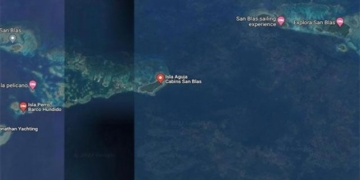Researchers Discover Geological Processes Leading to the Formation of Zealandia, Mostly Submerged Under the Ocean Today.
When the ancient supercontinent Gondwana broke apart 83 million years ago, a massive portion of it sank beneath the waves while drifting away. According to some geologists, the submerged landmass known as Zealandia would be considered the eighth continent of Earth if it weren’t for the thick layer of seawater obscuring it. Instead, the only parts of this continent that rise above the ocean surface are New Zealand and its surrounding islands, which is why Zealandia has long remained a great mystery.

Simulation of Zealandia continent. (Photo: Ianm35/Creatas Video+).
Approximately 94% of the 4.9 million km2 landmass is submerged underwater, hiding details about the northern portion of the land. Using geochemical data and isotopes from newly dredged rock samples, alongside seismic data, researcher Andy Tulloch from the Geoscience and Nuclear Science Institute (GNS) and his colleagues created regional maps to understand how the continent formed. They published their findings in the journal Tectonics, as reported by Science Alert on September 21.
The rock samples, some dating back to the time of the dinosaurs, were collected from various exploratory drilling sites and some exposed peaks in the southern part of Zealandia, such as Chatham Island and Antipodes Island. Analysis of the chemical composition of the samples, along with other geological evidence, revealed similarities with West Antarctica, indicating that the edge of Zealandia was subducted about 250 million years ago, in what is now the Campbell Plateau along the western coast of New Zealand.
Subduction occurs when two tectonic plates press against each other, causing one plate to sink into the mantle. However, contrary to previous assumptions, the magnetic anomaly in the same region is unrelated to this event, according to Tulloch’s team. Both Zealandia and Antarctica have undergone significant deformation internally. The research team believes that the Campbell magnetic anomaly resulted from the stretching between different parts of Gondwana. Eventually, they broke apart, creating the seabed surrounding Zealandia.
Initially, the Zealandia/Southwest Antarctica and Antarctica/Australia regions fractured, allowing the Tasman Sea to flood in about 83 million years ago. Subsequently, at the end of the Cretaceous period, around 78 million years ago, Zealandia and Southwest Antarctica drifted apart, forming the Pacific Ocean.
The process of Zealandia’s crust being stretched incredibly thin before breaking apart has puzzled geologists. Southwest Antarctica also exhibits similar thinness. Tulloch and his colleagues found evidence of differential extensional forces of up to 65 degrees from 100 to 80 million years ago. They suggest that this caused the continental crust to thin. This new discovery will provide a solid foundation for scientists to analyze the peculiar stretching of the Earth’s crust in greater detail.




















































